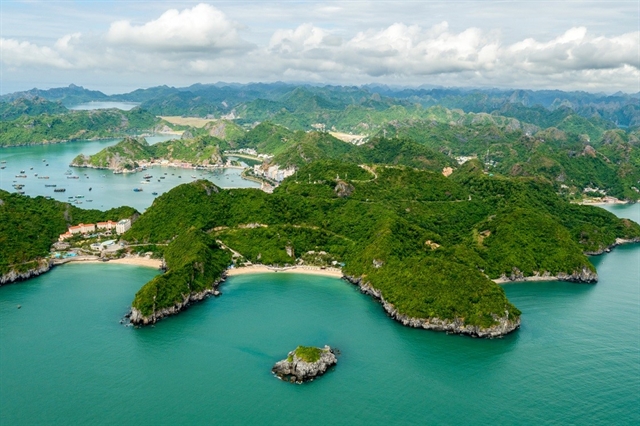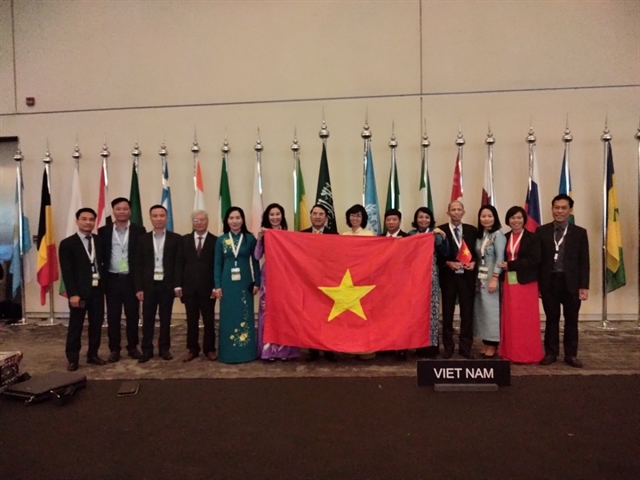 Life & Style
Life & Style

HÀ NỘI — Hạ Long Bay - Cát Bà Archipelago in the northern province of Quảng Ninh province and neighbouring Hải Phòng city has been officially recognised as a world natural heritage sites.
The United Nations Educational, Scientific, and Cultural Organisation (UNESCO) announced the new inscription of the Vietnamese site to the list at the 45th session of the World Heritage Committee in Riyadh, Saudi Arabia, on September 16.
Cát Bà Archipelago in the northern port city of Hải Phòng is the largest limestone archipelago of the country. It has more than 360 islands, including Cát Bà Island to the south of Hạ Long Bay.
The archipelago had earlier been recognised by UNESCO as a world biosphere reserve.
Hạ Long Bay in Quảng Ninh province has named by UNESCO as a world heritage site twice in 1994 and 2000.
 |
| Cát Bà Archipelago in the northern port city of Hải Phòng is the largest limestone archipelago of the country. — VNA/VNS Photo |
According to the Ministry of Culture, Sports and Tourism, the Hạ Long Bay - Cát Bà archipelago cluster boasts a rich diversity of island and ocean ecosystems. It is home to various rare animals and plants and houses the country’s largest maritime forest covering an area of more than 17,000 hectares.
It is the habitat of 4,910 species of plants and animals on land and in the sea, of which 198 species are on the International Union for Conservation of Nature's Red List of Threatened Species and 51 endemic species.
The primeval forest area of about 1,045.2 ha on Cát Bà island is one of the important factors creating the ecological value and biodiversity of the heritage. In particular, the Cát Bà Langur (Trachypithecus poliocephalus) is a rare species, on the list of animals at highest risk of extinction. Up to now, there are about 60-70 individuals distributed only in Cát Bà.
In September 2016, the then Prime Minister allowed Hải Phòng city to work with Quảng Ninh province to plan the nomination of Hạ Long Bay - Cát Bà Archipelago as a world heritage site.
Hạ Long Bay - Cát Bà Archipelago was added to the World Heritage List due to the beauty of its natural landscapes, including charming vegetation-covered limestone islands, breath taking limestone islets, and impressive karst formations. Ambassador Lê Thị Hồng Vân, head of the Permanent Mission of Việt Nam to UNESCO, said that the recognition affirms international appreciation for the beauty of the heritage and Việt Nam's efforts to protect it. This is also another contribution of Việt Nam to the heritage value preservation and promotion goal that UNESCO is promoting.
 |
| The Vietnamese delegation attends the 45th session of the World Heritage Committee in Riyadh, Saudi Arabia. — VNA/VNS Photo |
Vân said that Việt Nam’s world heritage sites recognised by UNESCO have been making an important contribution to local socio-economic development, as well as to environmental protection, green and sustainable growth, thereby promoting the culture, land and people of Việt Nam to the world as well as enriching humanity's cultural treasure.
Before the new addition, Việt Nam had eight world heritage sites recognised by UNESCO, namely Phong Nha-Kẻ Bàng National Park in Quảng Bình Province, Hạ Long Bay, the Huế Imperial Citadel City in Thừa Thiên Huế Province, Hội An Ancient Town and the Mỹ Sơn Sanctuary in Quảng Nam Province, Thăng Long Imperial Citadel in Hà Nội, the Citadel of the Hồ Dynasty in Thanh Hóa Province, and the Tràng An Landscape Complex in Ninh Bình Province. — VNS




